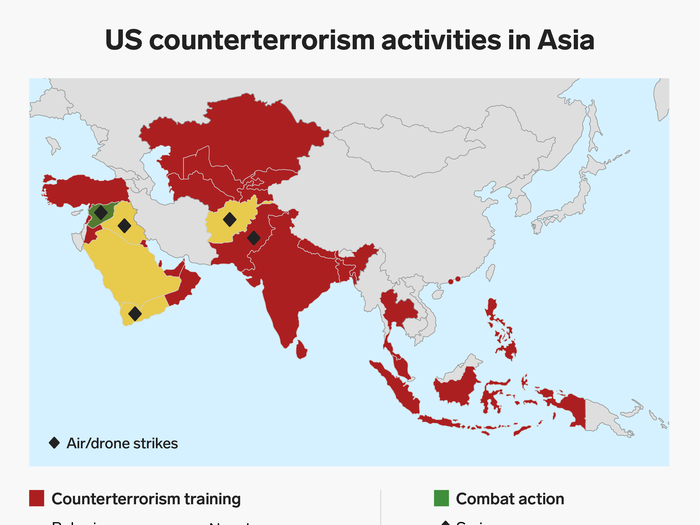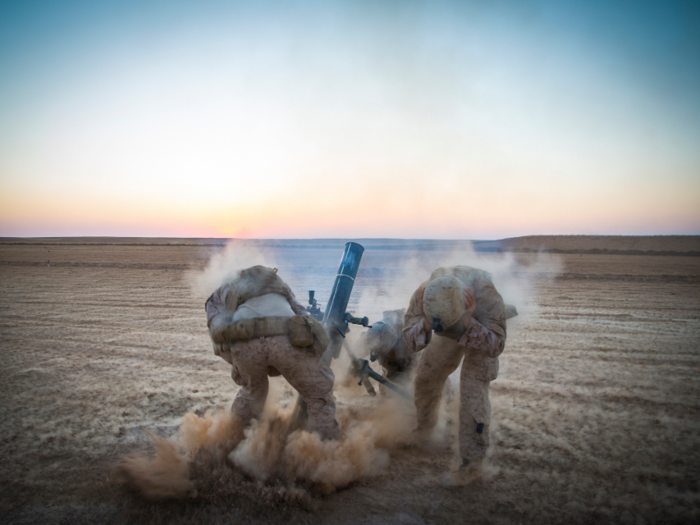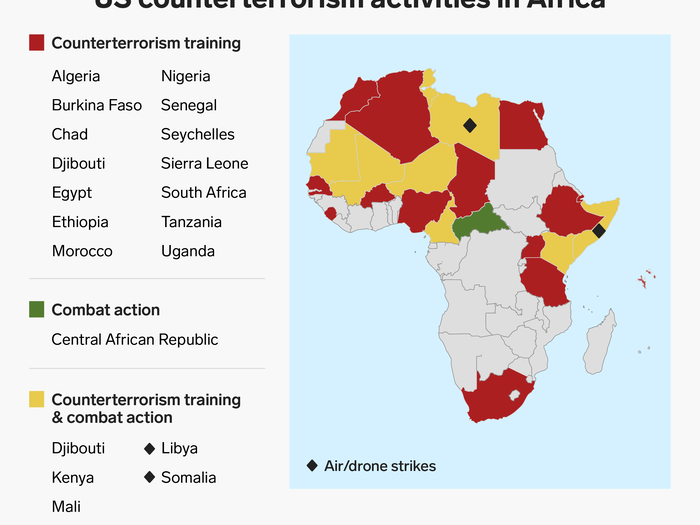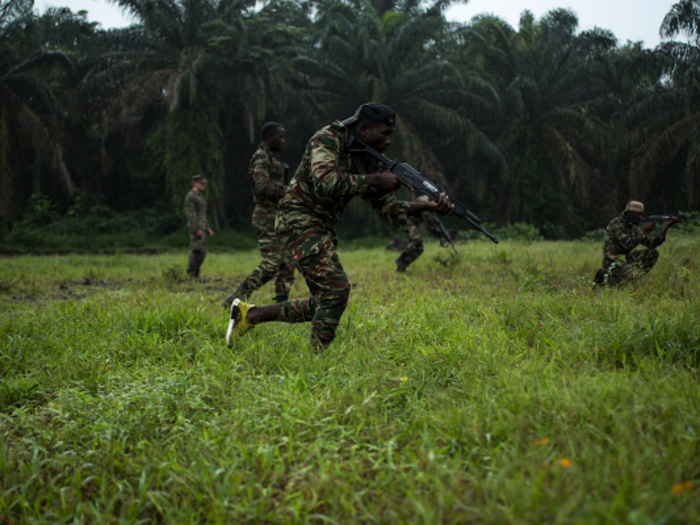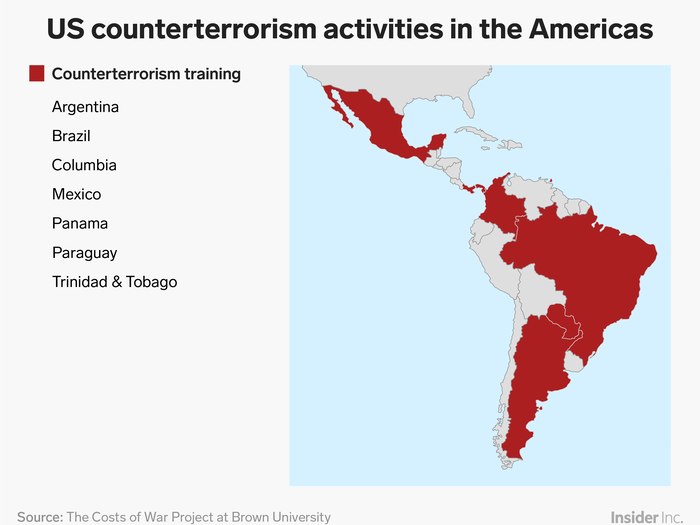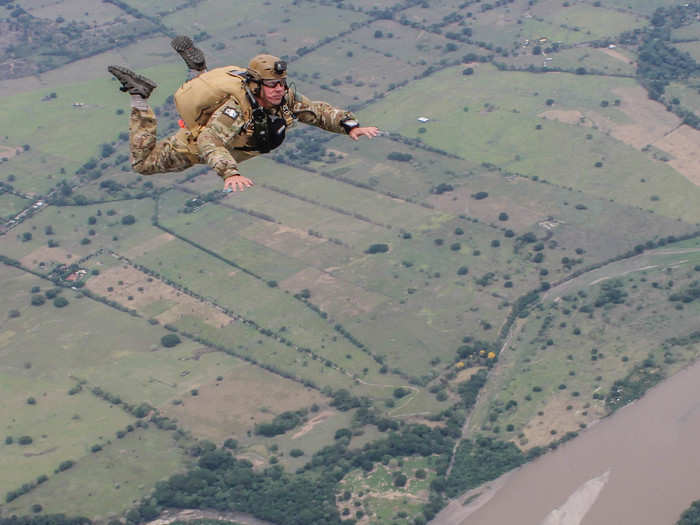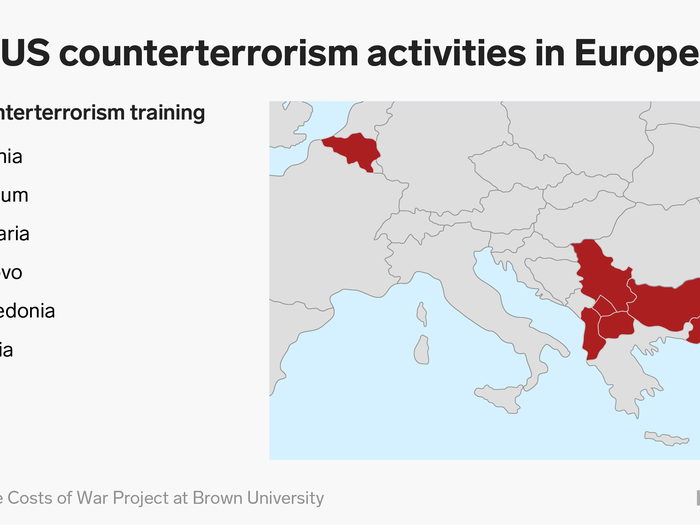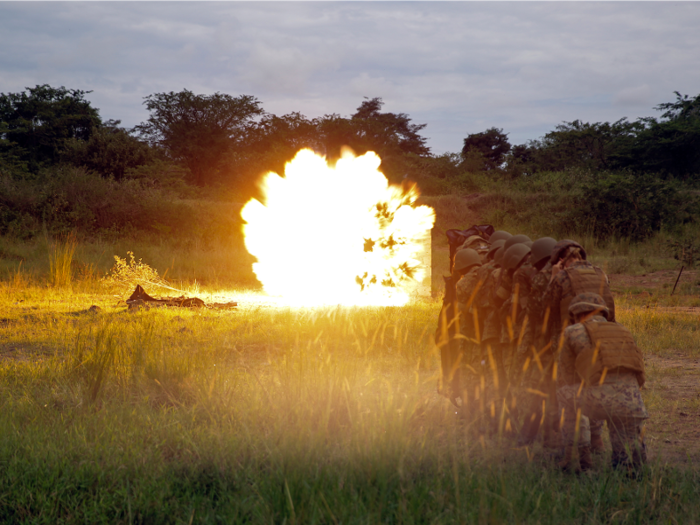Although the 'global war on terror' has expanded dramatically since its declaration, the majority of counter-terrorism missions still occur in the Asia-Pacific region.
Based on Brown University's data, US forces are involved in 30 countries across Asia.
In December, the US announced its impending withdrawal from Syria, but conflicting reports have only raised more questions as to when complete withdrawal will occur.
The announcement also leaves open-ended questions regarding the future of the US-backed Kurdish militias fighting ISIS, and the hundreds of ISIS prisoners in their custody.
In addition to uncertainties about the timeline for Trump's pullout, it remains unclear if the US will continue airstrikes against ISIS or logistical and training support for the allies fighting ISIS on the ground.
Africa is another important front in the war against terror, and reports show US involvement continues to expand.
"We've done a lot of security cooperation in the Lake Chad region, and that area includes Nigeria, Niger, Chad and Cameroon. We've done some training in Somalia ... and south of that," Maj. Gen. Roger Cloutier, head of US Army Africa, told Military Times.
There are roughly 15 countries located south of Somalia.
Troop presence in the Americas is mostly related to counter-drug and counter-terrorism.
The analysis also highlighted US presence in Trinidad & Tobago, which has fallen under increased scrutiny as a recruiting hub for the Islamic State.
Missions in Central and South America have also expanded, and now include Mexico and Paraguay.
In Europe, troops are engaged primarily in former Yugoslavia.
Their presence is a legacy of NATO's Operation Allied Force bombing campaign against Yugoslavia in 1999.
Since 2017, it has become increasingly difficult to track down where US forces are located and what they are doing there.
As a policy, the Department of Defense does not confirm outside reports of US troops in a particular country or region.
Public affairs personnel will release spreadsheets that show how many troops were present in tax-exempt combat zones for a particular month, but that information is far from comprehensive, effectively shadowing the full extent of American involvement abroad.
Of the countries listed in this report, only 22 are listed by the IRS as a designated combat zone.
The rest of the countries, including Niger, do not fall inside of a designated combat zone and would therefore be left out of any such data.
Others, like Colombia, do appear in the DoD's data but are not listed by the IRS. Inconsistencies and caveats — some of which are described by the IRS — make an exact overview difficult to determine.

